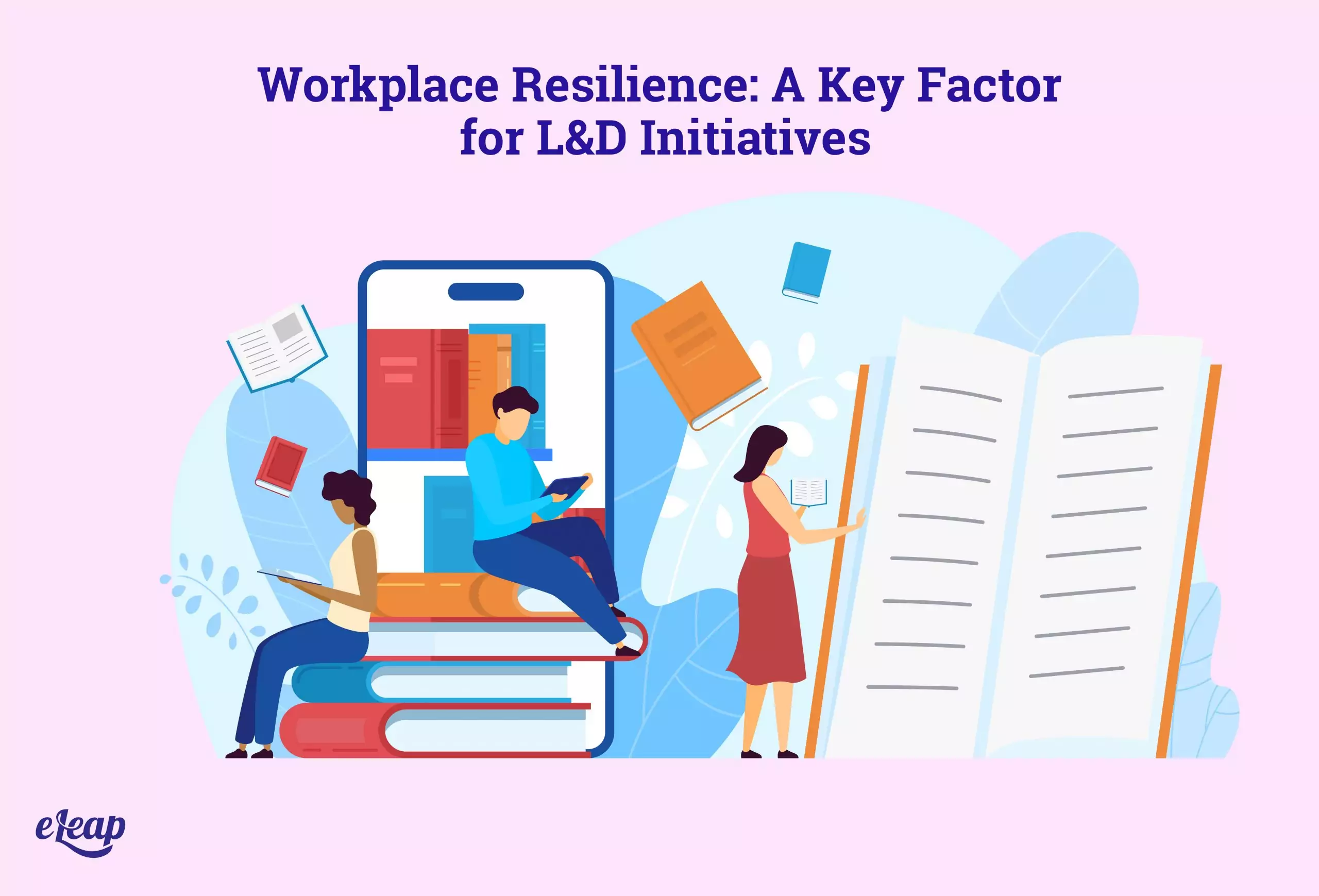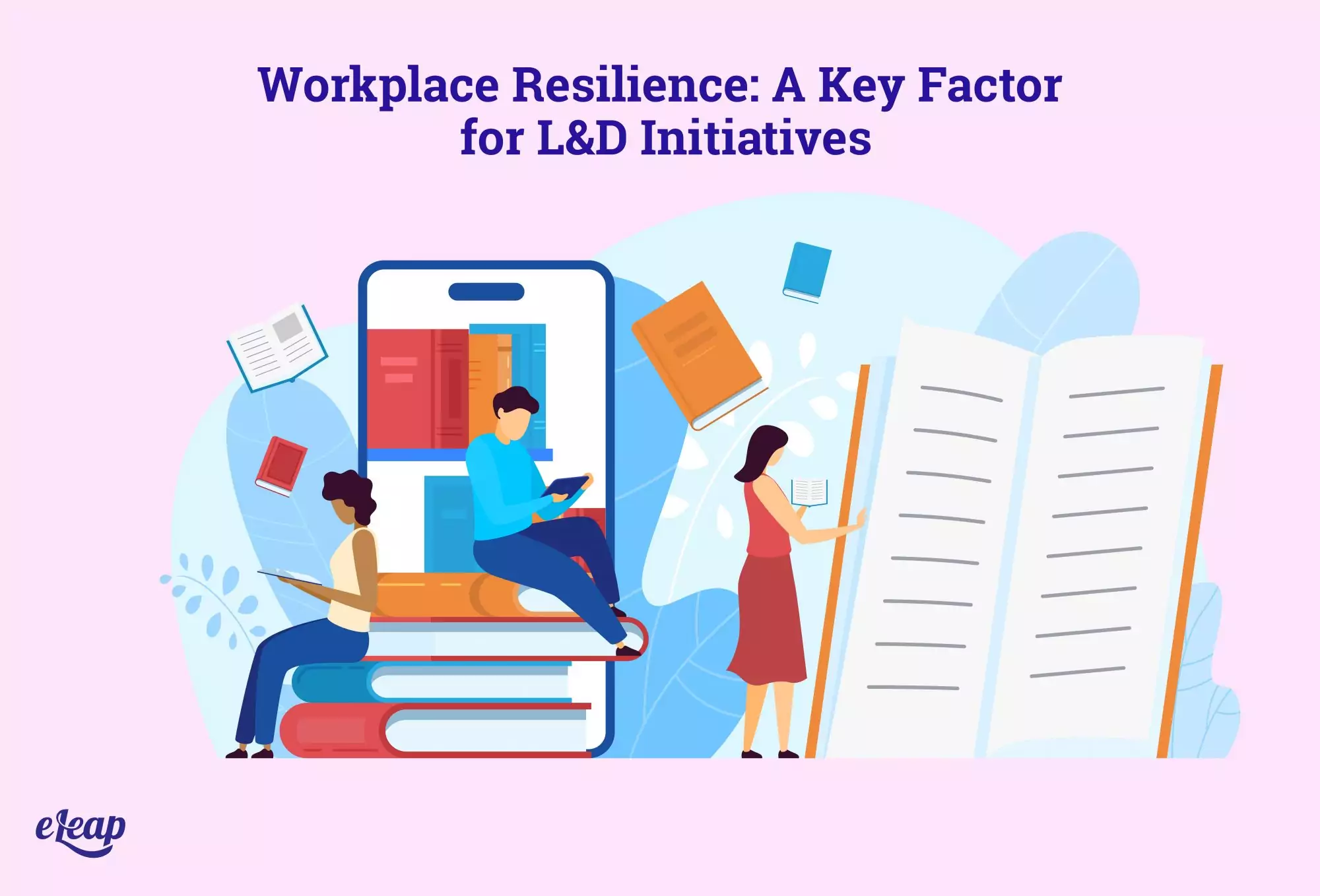Workplace Resilience: A Key Factor for L&D Initiatives

When you think about characteristics and qualities vital for success in the workplace, what comes to mind? Chances are good you think of having the necessary hard skills, or perhaps it’s doggedness that speaks to you. While employees need a host of different skills and aptitudes to thrive in today’s work world, resilience is perhaps the most critical. As such, it should form a key part of your L&D initiatives. Find a way to introduce employee resilience training into your curriculum.

What Is Resilience?
If we turn to the American Psychological Association for a definition of resilience, we find the following:
“The process of adapting well in the face of adversity, trauma, tragedy, threats, or significant sources of stress, such as family and relationship problems, serious health problems, or workplace and financial stressors.”
Resilience is really nothing more than a person’s ability to “bounce back” from events and occurrences that create stress or add strain to their lives. The loss of a loved one, the loss of a job, a disaster that leaves them without a roof over their heads – these are good examples. However, they’re just the tip of the proverbial iceberg. Stressors come in many different shapes and forms, some familiar and some not so much. For instance, the following stressors also require resilience for employees to “bounce back”:
- Discrimination in the workplace
- Feeling undervalued or invisible on the team
- Having thoughts and ideas derided or ignored
- Being passed over for a promotion
- Dealing with an unsupportive manager
- Struggling with negative/toxic coworkers
- Being immersed in a negative culture
Resilience does not mean that someone doesn’t experience negative events or struggle at times. It means that they can overcome those situations through a combination of inner skills and the right external supports. Business owners and decision-makers must help their employees develop the resilience necessary for success in today’s world.
How to Help Employees Become More Resilient
While your employees have varying levels of resilience naturally, it is a learned skill. What that means is you can make it part of your L&D initiatives and build a workforce that’s better able to deal with stressors and bounce back from negative events. Ultimately, that has a profound effect on the organization as a whole, including:
- Better overall morale
- Reduced absenteeism
- Improved business culture
- Reduced churn and related costs
- Improved employee wellness
So, how do you do it? You’ll find many options, and we’ll address some of the most important (and effective) below.
Mindfulness Training
Mindfulness training comes to us from the Buddhist tradition, but it has implications that go well beyond that school of thought. It has been used successfully in everything from stress reduction to increasing cognitive flexibility and provides employees with an important tether (usually the breath) to use to come back to the present moment when they are feeling overwhelmed. Mindfulness can be taught in any number of ways, from basic overviews of breath training to more advanced meditation practices.
Organizations have a broad range of options for delivering that training, too. A learning management system can be used to deliver text, animated content, recorded video, and other training types to fit the learner’s needs and preferences. Also, practical learning can be provided through team meetings and more. For instance, lead off every team meeting with a moment or two of focused breathing, or have a group meditation through Zoom.
Social Support
A huge part of an individual’s resilience has nothing to do with their mental capabilities, and everything to do with their social support network. Humans are social animals. We’ve evolved to work best in groups, and that includes dealing with negative events.
However, the modern world glosses over the importance of social support. That’s apparent in some of the language we use – to pull ourselves up by the bootstraps, for instance, implies that we have gotten (or are getting) where we want without the help of others, although that is patently impossible.
Social support is a critical element to having resilient employees, and leaders can help their team members form stronger relationships with one another. A myriad of options exists, including:
- Discussion boards for employee use and “off-topic” talk
- Happy hour (virtual happy hour during the pandemic)
- Group lunch breaks (virtual or otherwise depending on the situation)
- After-hours get-togethers for team members (think of this as networking)
- Mentorship programs that build not only professional capabilities, but social bonds
Overall, the focus should be on creating strong relationships, both in the workplace and outside of it, that help employees feel connected and supported. In addition to the options discussed, you can (and should) include training related to social support for all employees.
Teach the Importance of Breaks
When we think about learning and development in relation to businesses, most of the time we focus on key skills and abilities. However, your LMS can be a vehicle for much more than that. One of the options available is the ability to train your team in skills that help improve their work-life balance and improve their mental and emotional health. One key to that is taking breaks, particularly in very stressful situations.
Break taking is an art in itself and one that will require time to master and some degree of customization. Our focus and energy rise and fall over a period ranging from an hour to two hours. We must take breaks when necessary to keep our energy levels high and our productivity where it needs to be.
This could be something as simple as taking a 10-minute break every hour or perhaps stopping for 15 minutes every two hours. However, we also need to recognize when we need a break in emotionally-draining or stressful situations. When the emotional or mental strain becomes strong, we need to learn that it is okay to step away for a few moments, engage in mindful breathing, and regroup before coming back.
A Stronger, Healthier Team
Workplace resilience is a critical consideration and touches on everything from your ability to compete within an industry or vertical to dealing with employee turnover. By including resilience training in your L&D initiatives, you help give employees the tools they need to live their best lives while creating a stronger, healthier, more engaged team.